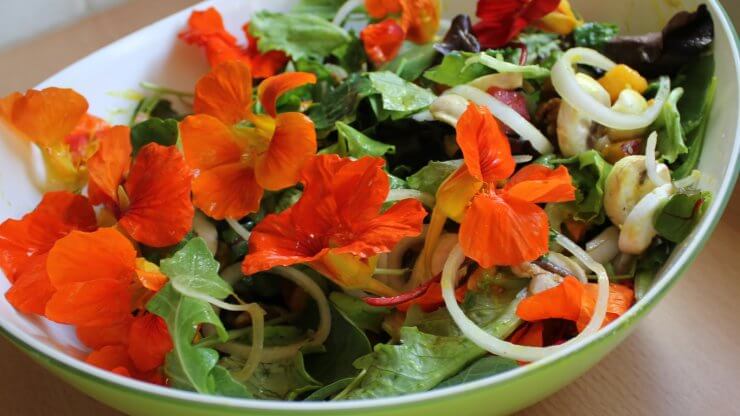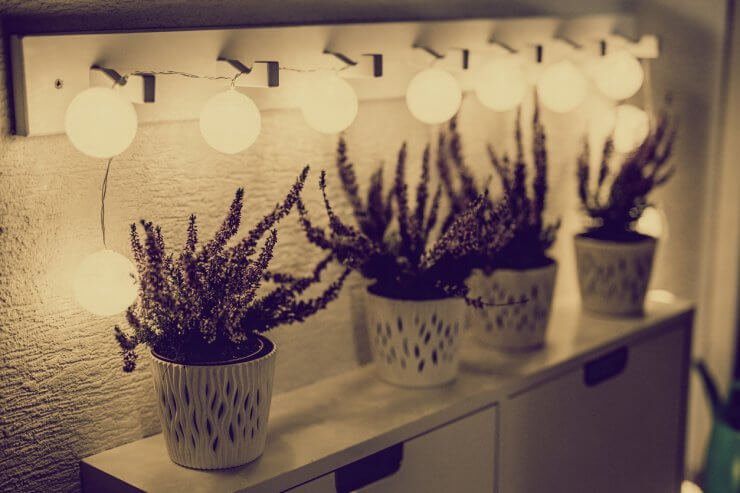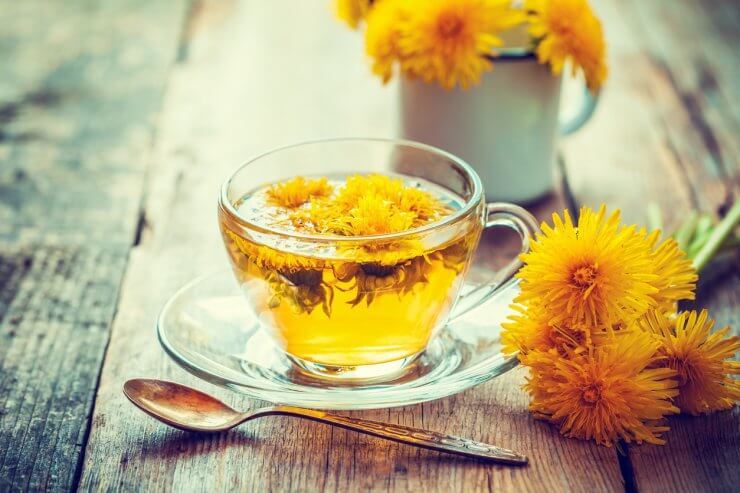
I love dinner parties, and when there’s an opportunity for one, I want to be ready. I was looking for different ways to level up my hosting abilities and remembered the bonus points earned through edible flowers. Adding edible flowers to any dish as garnish or flavor enhancer is sure to wow the crowd. In the fall and winter, you may be forced to source them from the store. But why not try to grow edible flowers indoors?
There are so many delicious edible flowers to enjoy in both savory and sweet dishes, as well as cocktails! But not all edible flowers will thrive indoors. Flowers like pansies and lilacs, for instance, are tricky to grow indoors because they are more sensitive to moisture and lighting conditions. There are three basic ways to grow edible flowers indoors and you may even need to overlap the techniques depending on the flower.
1. On a sunny window sill
Nasturtiums are a great example of how to grow edible flowers indoors using a sunny windowsill. Nasturtiums prefer warm days and cooler nights, so a window sill that gets plenty of sun in the daytime is ideal. Known for their peppery flavor, nasturtiums are an excellent addition to a salad and offer a pop of warm colors to your plate.
Another edible flower that thrives on a sunny window sill is oxalis. Coming in a variety of colors, oxalis flowers have citrus notes that complement fish dishes well. Don’t be alarmed if these plants go dormant in the winter for a short period. Just give them a bit of fertilizer and sunlight and they will come back.

2. With the help of grow lights
If you want to grow edible flowers indoors, you may need to splurge on some grow lights. Certain edible flowers, like lavender, require long daily exposure to light and quick-draining soil. The trick with using grow lights is to understand the moisture needs for each plant and not roast them by placing them too close to the light (or a nearby heating register).
Lavender is an aromatic and versatile flower and my favorite way to use it is in desserts and liqueurs. Certain varieties are better suited for eating. I recommend the “Munstead” and “Royal Velvet” varieties. Careful when planting indoors if you have cats or dogs since lavender is considered mildly toxic to our furry friends. Though it won’t harm them permanently, the GI side effects are less than desirable (from both a comfort and cleanliness standpoint).
Sage blossoms are another edible flower that will thrive with the addition of grow lights. Even simple under-mount cabinet fluorescent lighting will help to grow edible flowers like sage blossoms. Though with basic under-cabinet lighting, you’ll need to expose the plant to longer periods of light than an indoor garden-specific grow light. Sage blossoms are gorgeous enough to adorn a wedding cake and yummy enough to batter and fry!

3. Using the right size container
When you prepare to grow edible flowers indoors, be sure to do your research about how much space each plant needs. Dandelions, for example, have deceptively long roots and require a pot that is at least six inches deep. I know what you’re thinking. Dandelions? I actively try to weed them out of my yard all summer and now you want me to grow them inside? Yes. Yes, I do! Dandelions are one of the most versatile edible flowers. Enjoy them in salads, teas. Fry up some dandelion fritters and drizzle with honey or add some dandelion petals to your favorite baked goods.
Another edible flower that requires a bigger container when growing indoors is the squash blossom. Growing squash indoors offers multiple uses in both vegetable and flower forms. The container for your squash plant needs to be deep (ideally 36 inches). Compact bush varieties are easier to grow indoors than larger vine-producing types. Varieties like butternut, yellow crookneck, and zucchini will all work for indoor gardens. Be sure to include plenty of drainage holes in these larger containers since squash does not like soggy environments.
The main takeaway when planning an indoor garden to grow edible flowers is knowing the light, water, and temperature needs of each flower. It may take some trial and error, but the wow factor from garnishing a dish or cocktail with fresh homegrown flowers is worth it!
Do you grow edible flowers indoors? What’s your favorite type to grow and what tips can you share? Let me know in the comments!


 Previous
Previous

